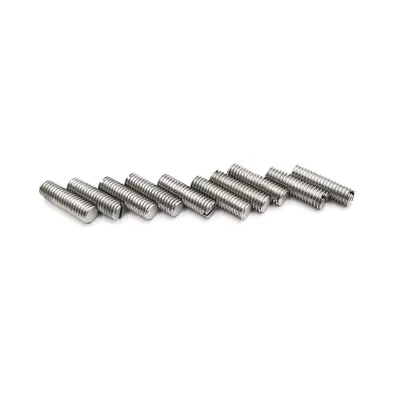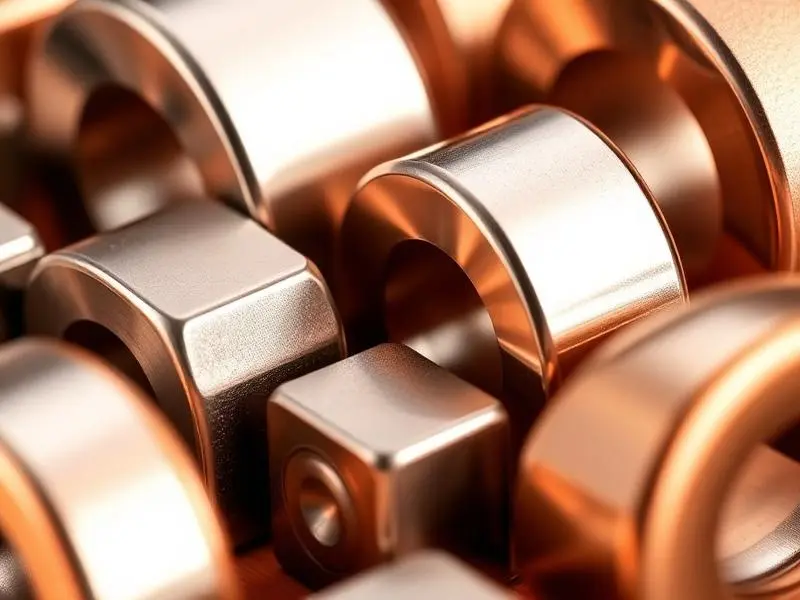FeCrCo Magnet Manufacturer in China
Leading manufacturer of high-performance Iron-Chrome-Cobalt permanent magnets for critical industrial applications

An Introduction to FeCrCo Magnet
FeCrCo magnets are made of iron, chromium, cobalt and small amounts of other elements such as molybdenum, silicon. It first appeared in the early 1970s. The magnetic properties of FeCrCo permanent magnets are similar to Alnico 5 permanent magnets.
The most prominent feature of FeCrCo magnets is their excellent machinability. FeCrCo permanent magnets are easily made into small, thin and complex shaped parts. The wire diameter of FeCrCo alloy can be as small as 0.05mm, and the strip thickness can be 0.1mm, which is suitable for making precision parts.
Superior Magnetic Properties
Engineered for exceptional performance in demanding environments with superior temperature stability and magnetic strength

Step-by-Step Manufacturing Process of FeCrCo Magnets
1. Raw Material Preparation and Melting
High-purity elements—iron (Fe), chromium (Cr), cobalt (Co), and additives—are precisely weighed to achieve the desired composition (e.g., Fe-25Cr-15Co).
- These are melted in a vacuum induction furnace or electric arc furnace at 1,400-1,600°C to form a homogeneous alloy, preventing oxidation and inclusions.
- The molten alloy is cast into ingots, bars, or strips via continuous casting for efficiency.
This step ensures a uniform starting material free of impurities that could affect magnetic performance.
2. Solution Treatment (Homogenization)
The cast alloy is subjected to a high-temperature solution treatment to dissolve phases and create a single-phase structure.
- Heated to 900-1,200°C in a controlled atmosphere (e.g., argon) for 1-2 hours, then rapidly quenched in water or oil to “freeze” the microstructure.
- This prepares the alloy for deformation by making it soft and ductile.
Quenching is critical to enable the spinodal decomposition that occurs later for magnetic hardening.
3. Deformation and Cold Working
Unlike brittle magnets, FeCrCo’s standout feature is its deformability:
- The solution-treated alloy is cold-rolled, drawn, or stamped into final shapes (e.g., wires, sheets, or custom forms) at room temperature, reducing thickness by 50-90%.
- Mechanical deformation aligns the microstructure and induces strain, which enhances magnetic properties during aging.
This step allows for complex geometries without the need for post-machining, reducing waste and costs.
4. Aging (Magnetic Hardening)
The deformed alloy undergoes low-temperature aging to develop its permanent magnetic properties through spinodal decomposition.
- Heated to 500-700°C for several hours (up to 24 hours) in a furnace, followed by controlled cooling.
- This precipitates fine magnetic phases (e.g., Co-rich and Fe-rich regions), increasing coercivity and remanence.
Aging parameters are tuned for specific grades, balancing strength and ductility.
5. Machining and Finishing
FeCrCo is highly machinable even after aging:
- Additional shaping via punching, drilling, or bending refines the product.
- Surface treatments like polishing or plating (e.g., nickel for extra corrosion protection) are applied if needed.
Tolerances can be very tight (±0.01 mm), making it suitable for precision engineering.
6. Magnetization and Quality Testing
The finished alloy is magnetized in a strong electromagnetic field to align domains.
- Testing measures key properties like remanence (Br), coercivity (Hc), and energy product using hysteresis graphs or pull testers.
- Inspections for microstructure (via metallography) and defects ensure quality, often per ASTM standards.
Magnets can be supplied in magnetized or demagnetized states.
Get In Touch
Join hundreds of satisfied customers who trust HS Magnet for their critical magnetic applications.
Contact our expert team for technical consultations, custom solutions, or product inquiries
